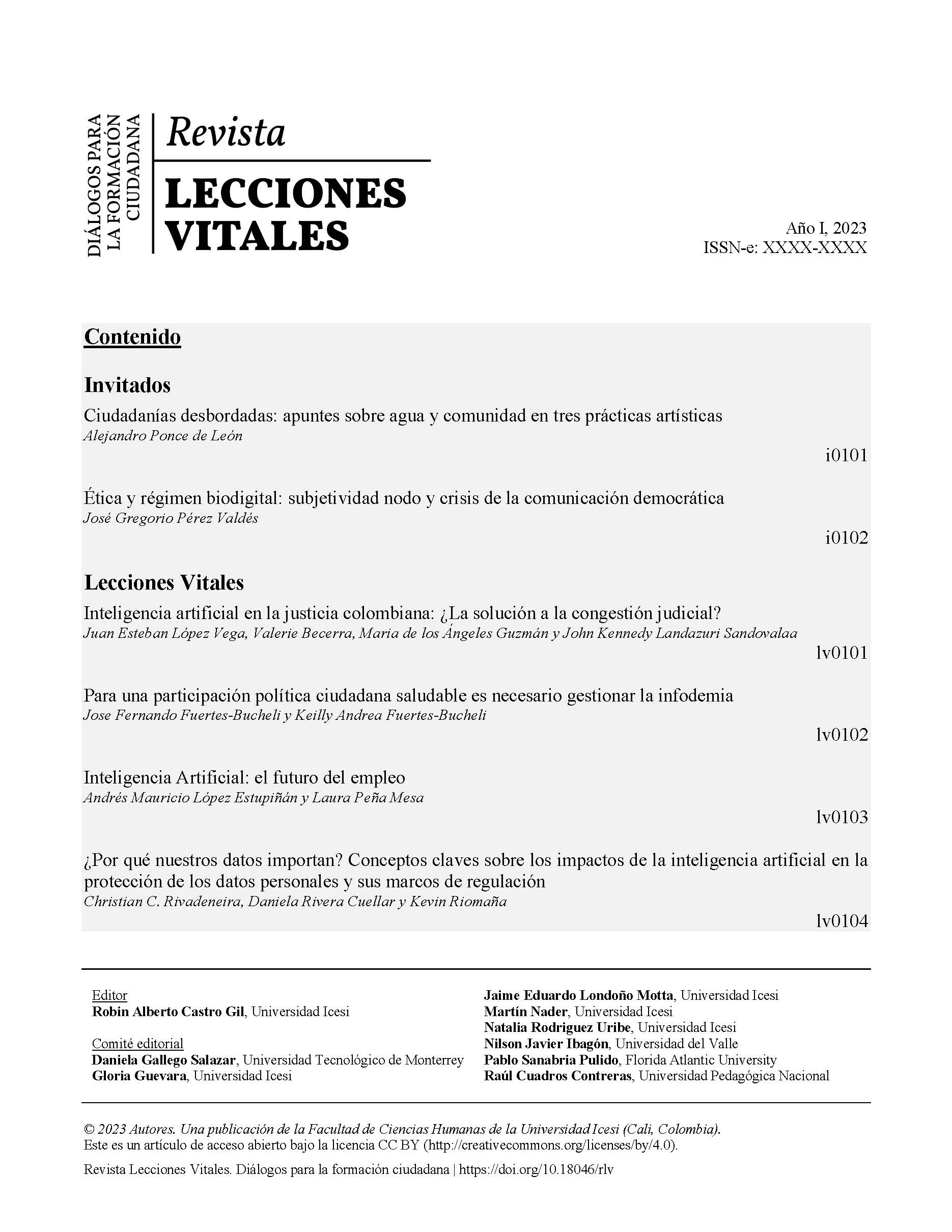Inteligencia Artificial: el futuro del empleo
DOI:
https://doi.org/10.18046/rlv.2023.6118Palabras clave:
Inteligencia artificial, Empleo, Industria, Automatización, TecnologíaResumen
El presente escrito busca evaluar posibles efectos y perspectivas de la aplicación de la inteligencia artificial y la automatización tecnológica en el mercado laboral. Mediante una revisión de la literatura, este ensayo evalúa algunos de los efectos en la eficiencia empresarial, implicaciones y preocupaciones, así como su potencial impacto en una transformación educativa.
Descargas
Referencias
Andrea Sestino & Andrea De Mauro (2022). Leveraging Artificial Intelligence in Business: Implications, Applications and Methods, Technology Analysis & Strategic Management, 34:1, 16-29, DOI: 10.1080/09537325.2021.1883583
Aspectos Básicos de la Industria 4.0. (2019). Recuperado el 14 de Julio, 2022 de https://colombiatic.mintic.gov.co/679/w3-article-124767.html
Campbell, C., Sands, S., Ferraro, C., Tsao, H. Y. J., & Mavrommatis, A. (2020). From data to action: How marketers can leverage A Business Horizons,63(2),227-243.
CCOO INDUSTRIA, La Digitalización y la Industria 4.0: Impacto industrial y laboral, CCOO, Madrid, 2017.
Clauberg, R. (2020). Challenges of digitalization and artificial intelligence for modern economies, societies and management. RUDN Journal of Economics, 28 (3), 556–567. https://shorturl.at/ajqsw
Corvalan, Juan Gustavo (2019). El impacto de la inteligencia artificial en el trabajo.
Revista de Direito Econômico e Socioambiental, Curitiba, v. 10, n. 1, p. 35.
Clua De Yarza, P. (2020). El Futuro del Empleo: Los Desafíos de la Automatización, la Inteligencia Artificial y Robótica. https://shorturl.at/bNZ59
Davenport, T. H. (2018). From analytics to artificial intelligence. Journal of Business Analytics, 1(2), 73-8.
Fariza, I. (2018, 19 noviembre). El avance tecnológico provoca una ola de despidos sin precedentes en la banca mexicana. El País.https://shorturl.at/btuM6
Graetz, G., & Michaels, G. (2018). Robots at work. The Review of Economics and Statistics, 100(5). 753-768. https://doi.org/10.1162/rest_a_00754 Crossref
Morikawa, M. (2016). The effects of artificial intelligence and robotics on business and employment: Evidence from a survey on Japanese firms. Research Institute of Economy, Trade and Industry (RIETI).
Sadiku, M. N. O., Fagbohungbe, OmobayodeI., & Musa, S. M. (2020). Artificial Intelligence in Business. International Journal of Engineering Research and Advanced Technology, 06(07), 62–70. https://doi.org/10.31695/ijerat.2020.3625
Schlögl, S., Postulka, C., Bernsteiner, R., Ploder, C. (2019). Artificial Intelligence Tool Penetration in Business: Adoption, Challenges and Fears. In: Uden, L., Ting, IH., Corchado, J. (eds) Knowledge Management in Organizations. KMO 2019. Communications in Computer and Information Science, vol 1027. Springer, Cham. https://doi.org/10.1007/978-3-030-21451-7_2
Wakefield, B. J. (2016, 25 mayo). Foxconn replaces «60,000 factory workers with robots». BBC News. https://www.bbc.com/news/technology-36376966
Zhang, H., Nguyen, H., Bui, X.N., Nguyen-Thoi, T., Bui, T.T., Nguyen, N., & Moayedi, H.(2020). Developing a novel artificial intelligence model to estimate the capital cost of mining projects using deep neural network-based colony optimization algorithms. Resources Policy, 66,101604.
Złotowski, J., Yogeeswaran, K., & Bartneck, C. (2017). Can we control it? Autonomous robots threaten human identity, uniqueness, safety, and resources. International Journalof Human-ComputerStudies,100,48-54.


